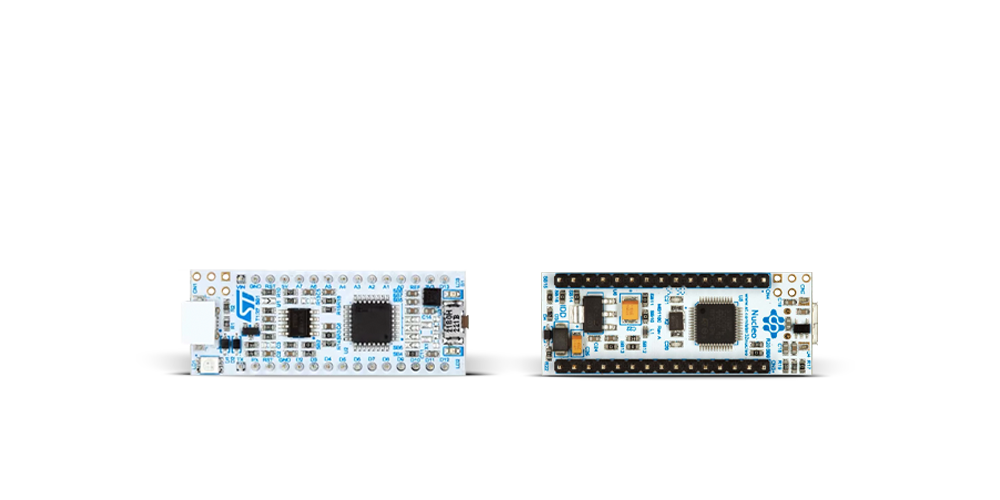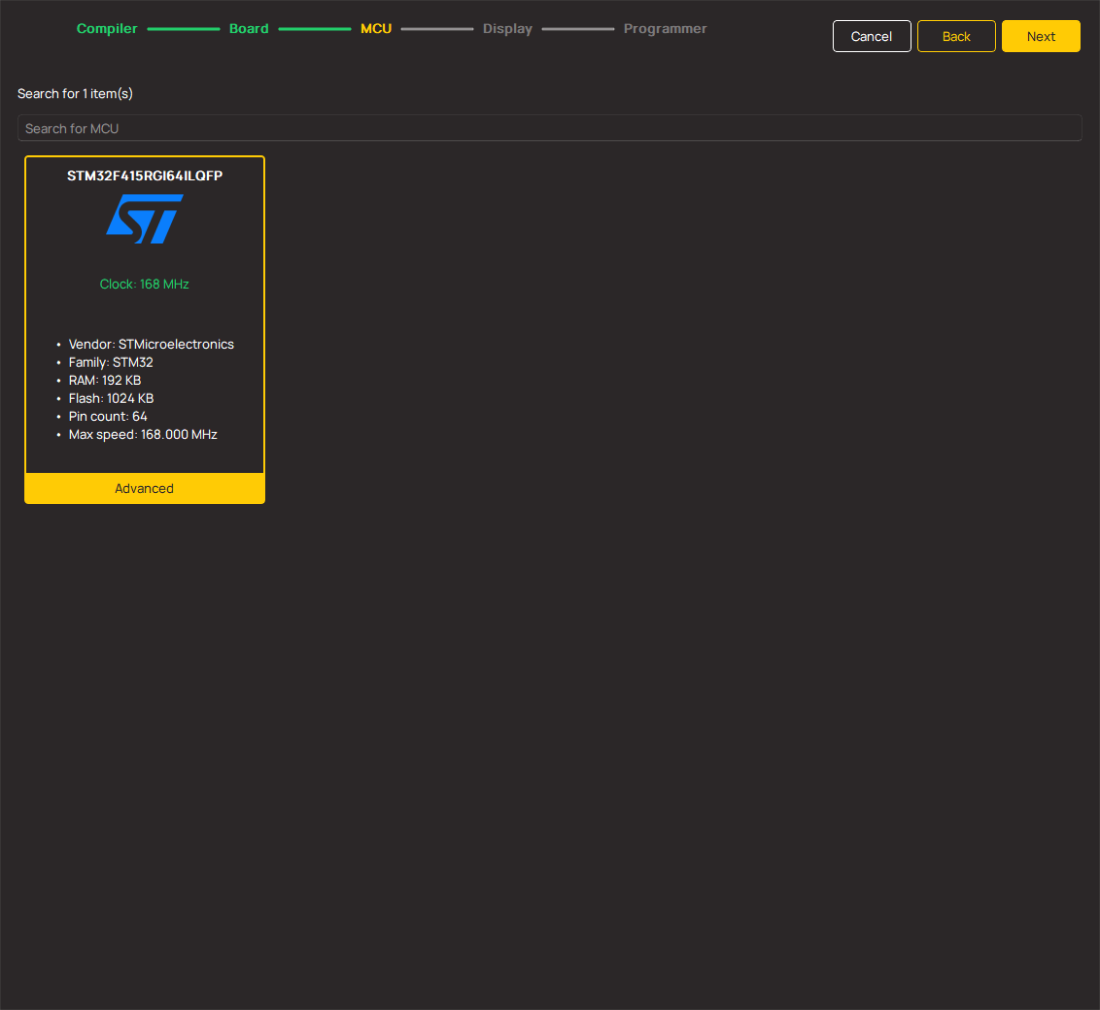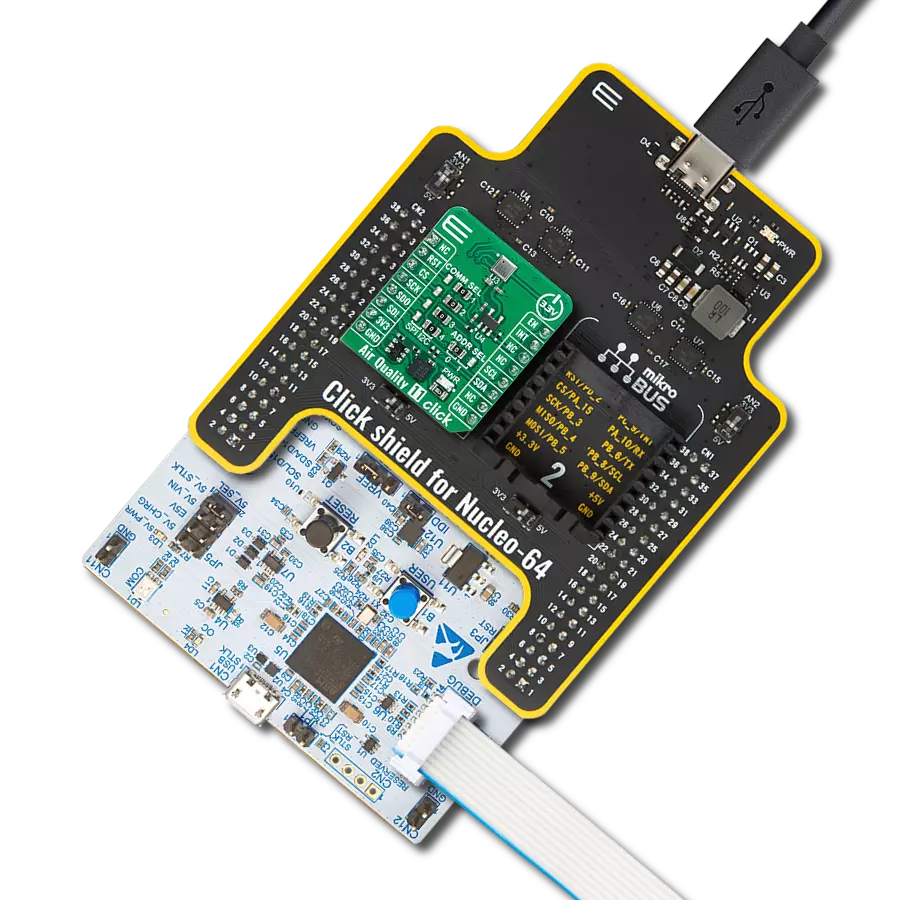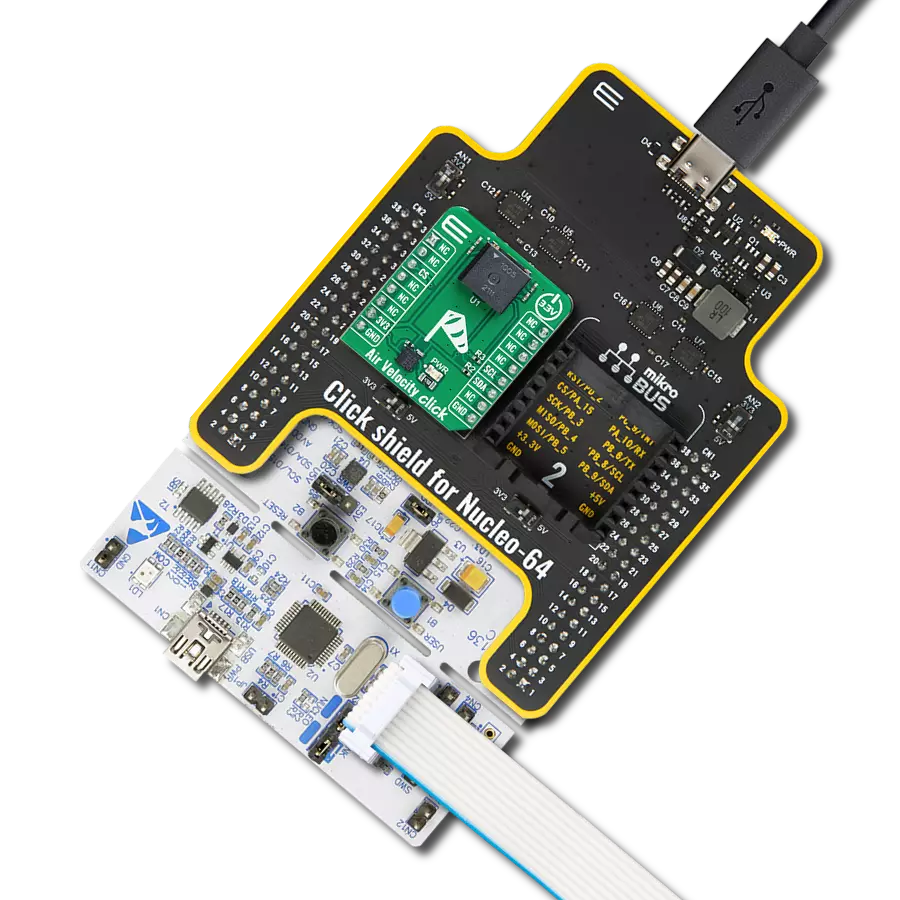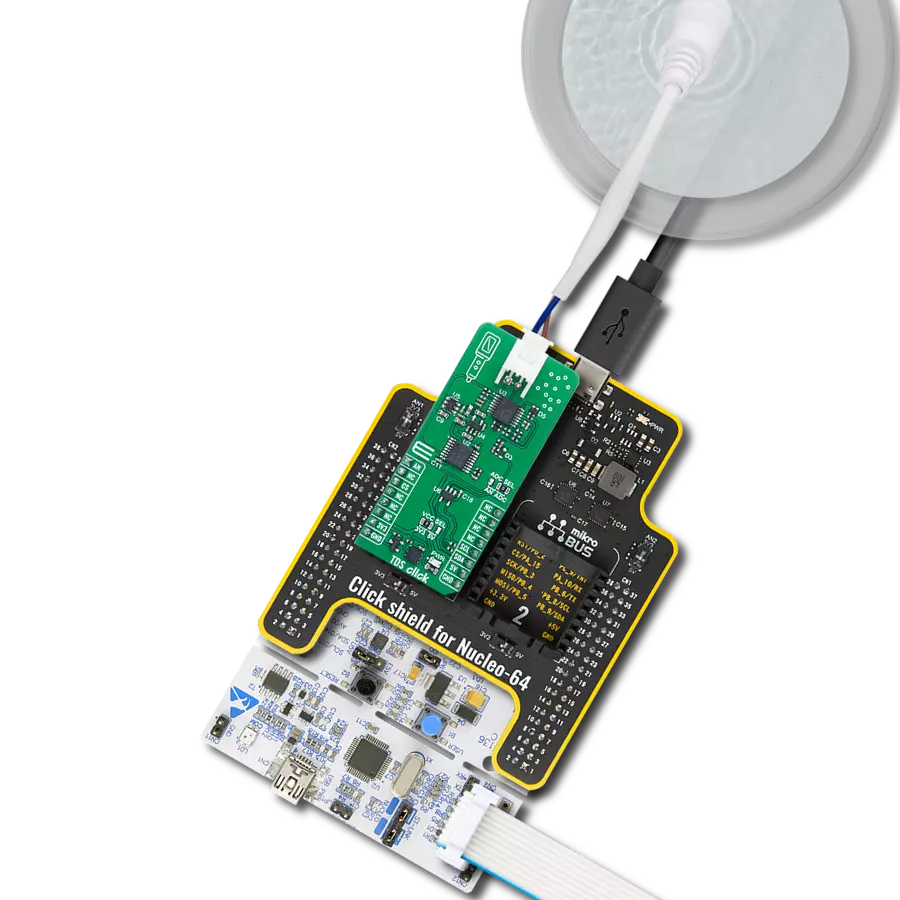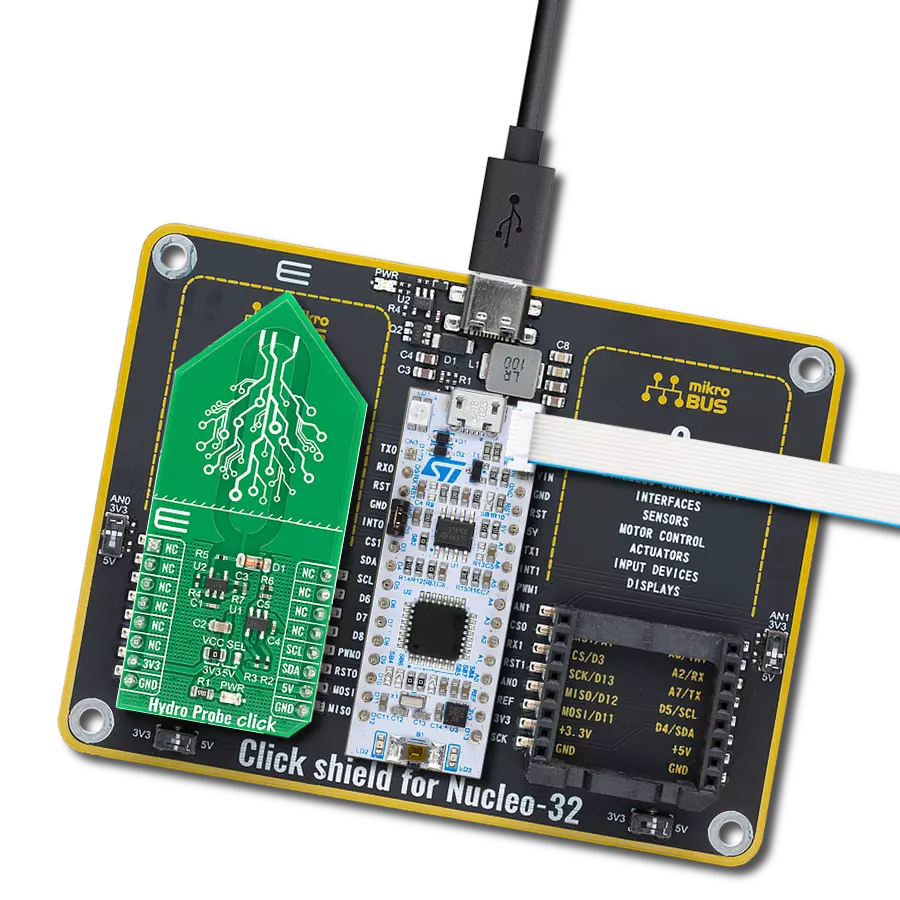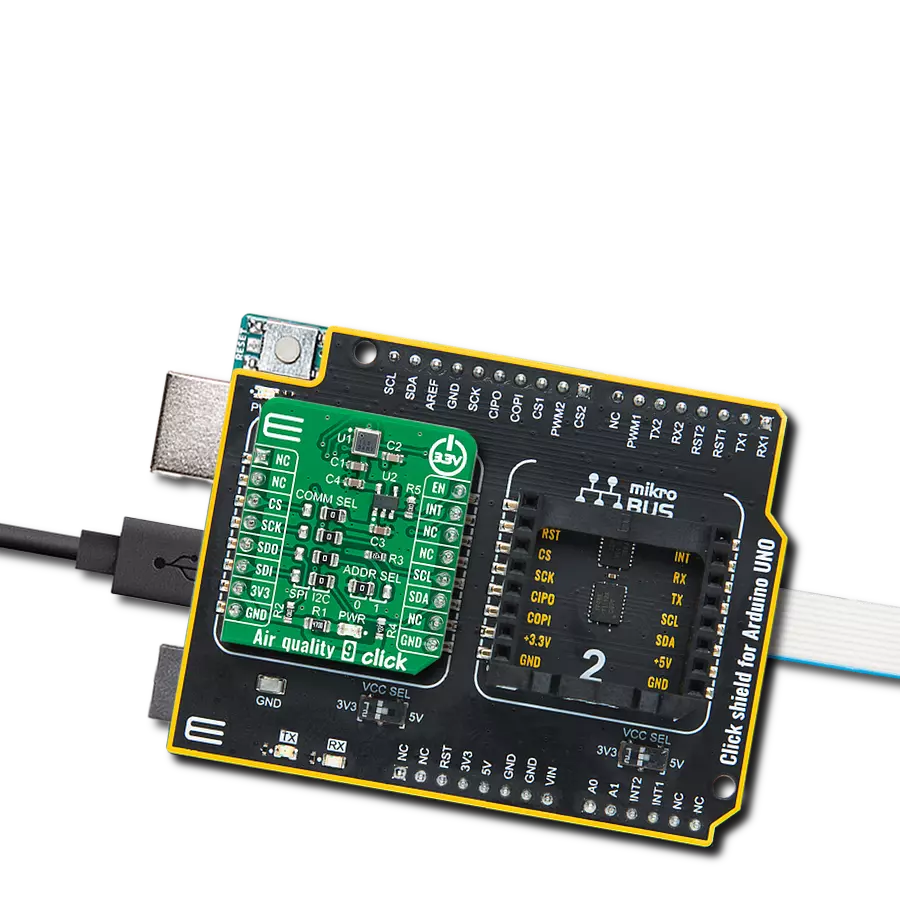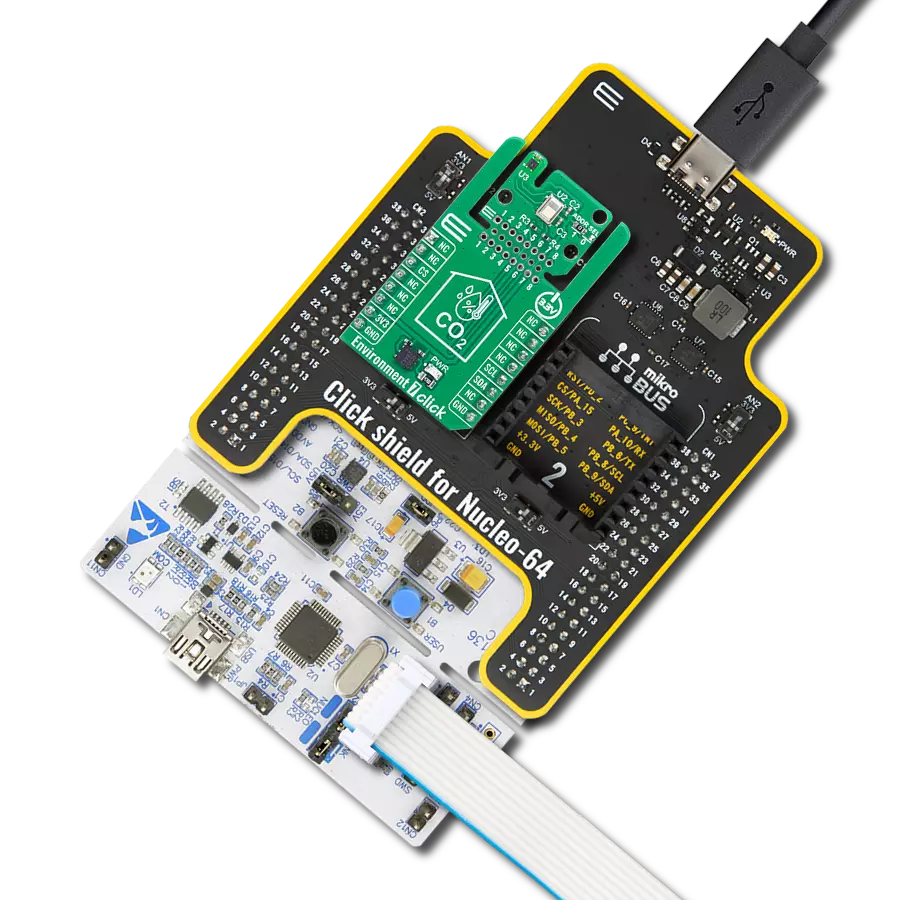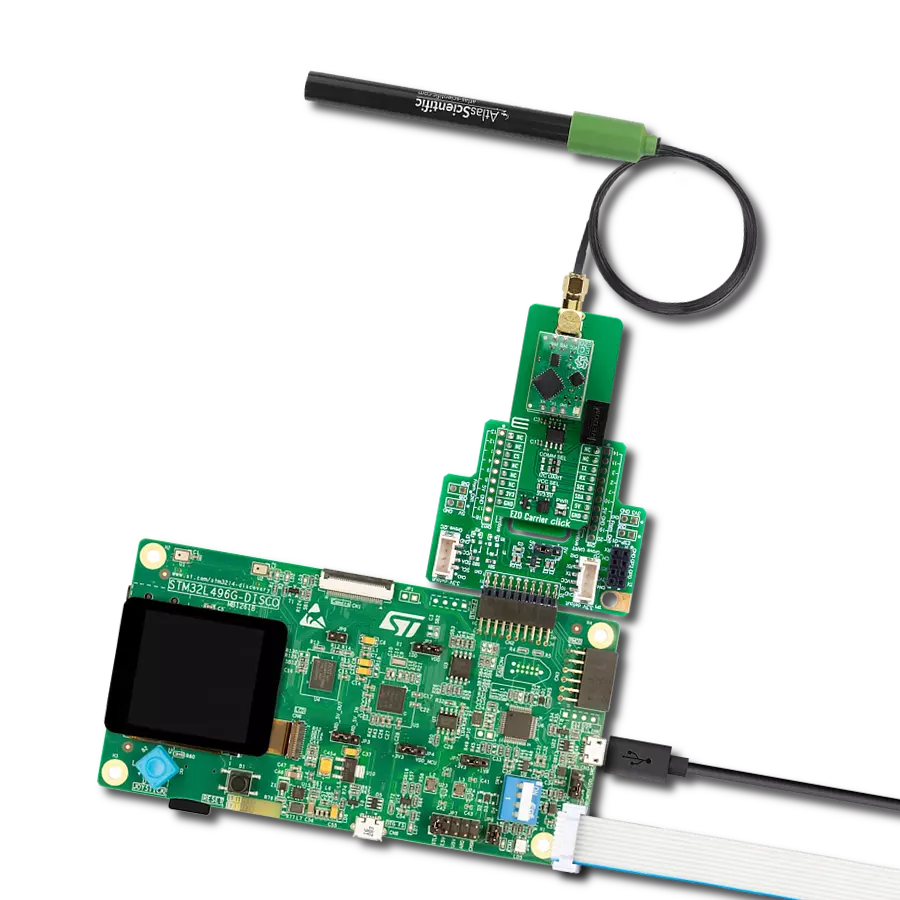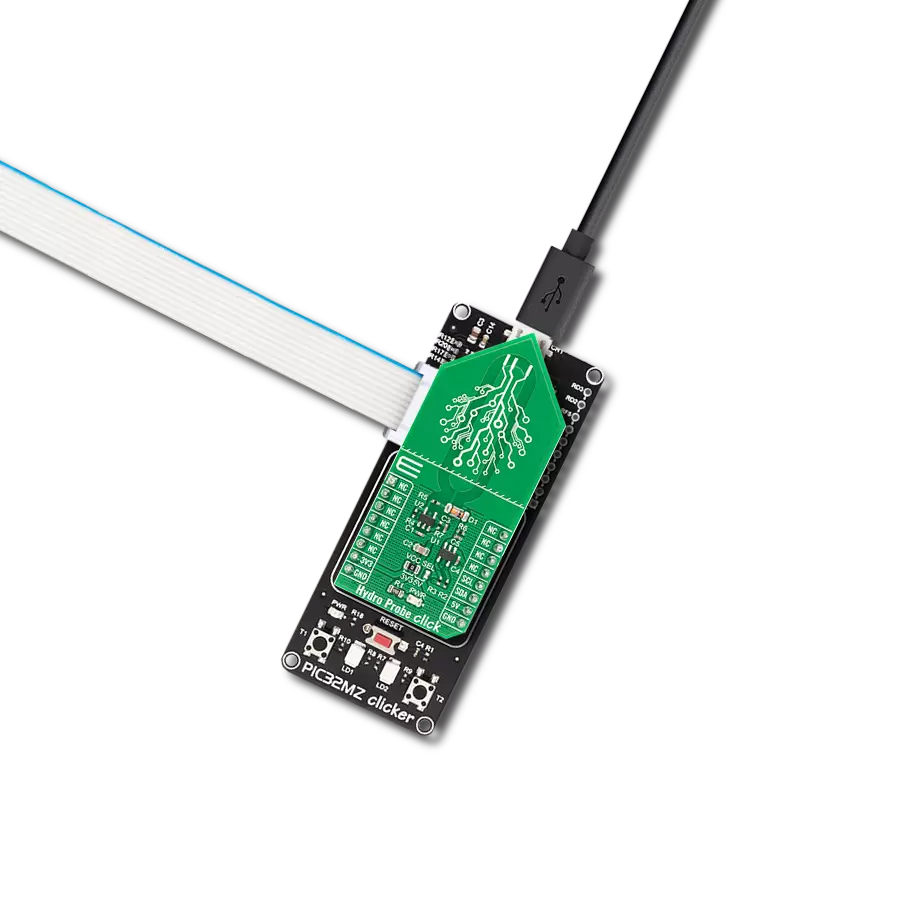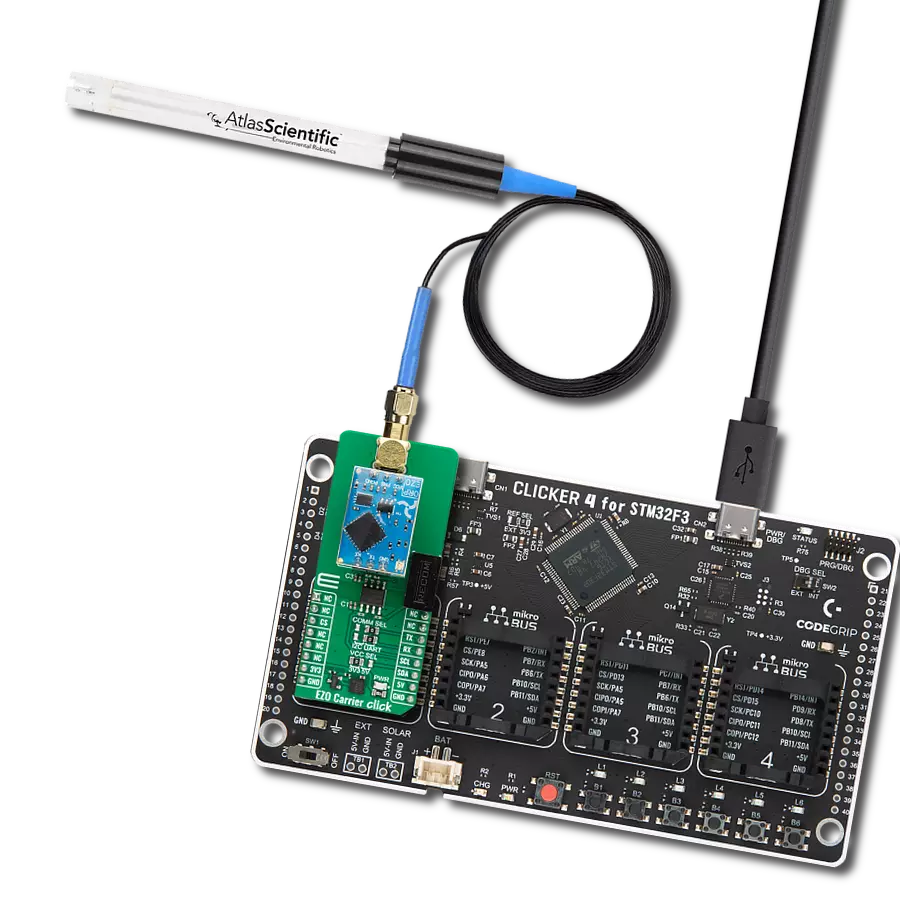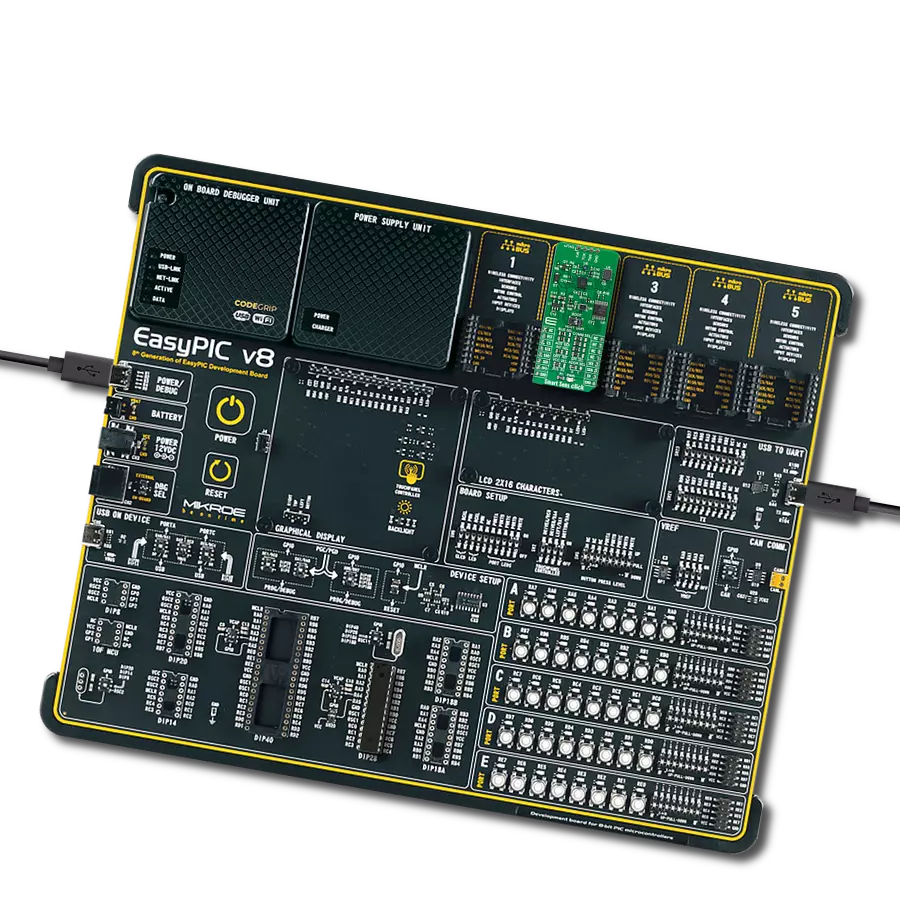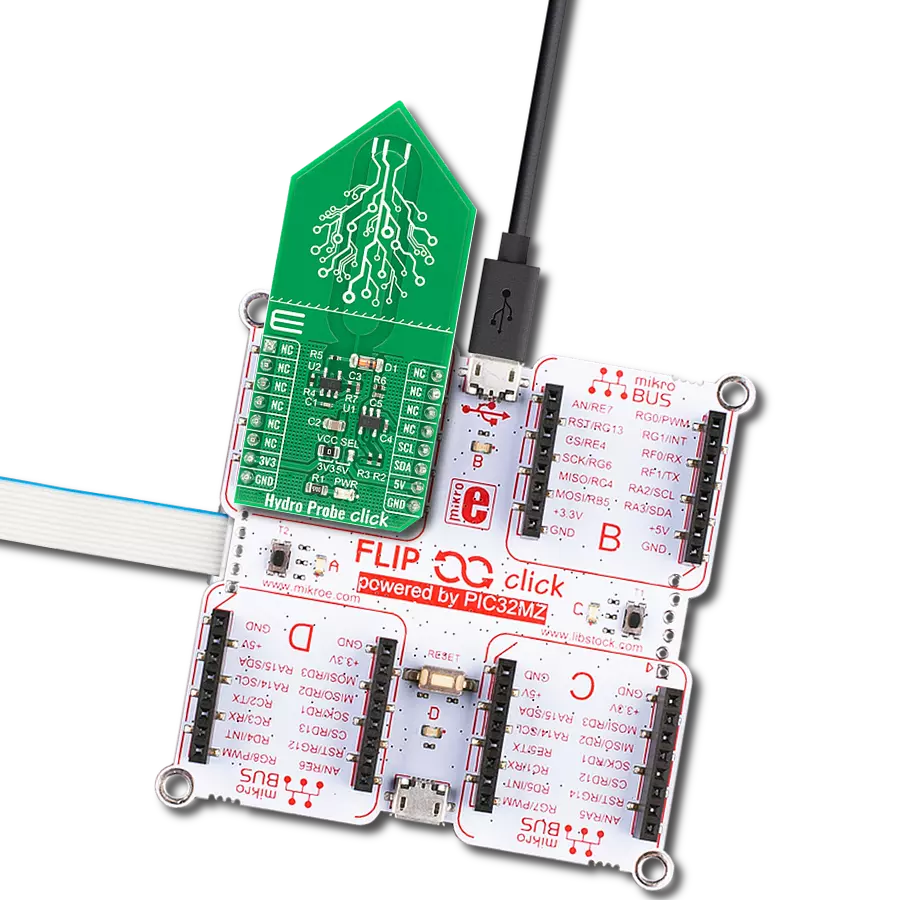Monitor and analyze the air you breathe indoors by detecting a wide range of volatile organic compounds (VOCs).
A
A
Hardware Overview
How does it work?
Air Quality 11 Click is based on the ENS161, a multi-gas sensor from ScioSense based on metal oxide (MOX) technology. It features four sensor elements that support both isothermal and low-power modes. This advanced sensor offers a unique capability of independently controlling the hotplate to detect a wide range of volatile organic compounds (VOCs) like ethanol, toluene, hydrogen, and oxidizing gases with enhanced sensitivity. Equipped with intelligent on-chip algorithms, the ENS161 processes raw sensor data to calculate various air quality metrics, such as TVOC- and CO2-equivalents and different air quality indices, and performs compensations for humidity and temperature. A key feature of the ENS161 is its TrueVOC® air quality detection, which adheres to global Indoor Air Quality (IAQ) standards. It measures equivalent CO2 (eCO2) from 0 to 65,000 ppb, meeting HVAC requirements,
and equivalent Total Volatile Organic Compounds (eTVOC) ranging from 400 to 65,000 ppm CO2-equivalent. Additionally, it supports both the German Federal Environmental Agency's (UBA) Air Quality Index (AQI-U) from 1 to 5 and a relative Air Quality Index (AQI-S) from 0 to 500. This solution finds applications in IoT devices, wearables, energy-sensitive building automation, HVAC systems, home appliances, and more. This Click board™ allows for flexible communication options, supporting both I2C and SPI interfaces. These interfaces enable communication speeds up to 1MHz for I2C and 10MHz for SPI. Users can select their preferred communication protocol by adjusting the SMD jumpers in the COMM SEL section. The jumpers must be aligned on the same side to avoid potential issues. An additional SMD jumper, labeled ADDR SEL, enables the adjustment of the I2C slave address. The ENS161 sensor operates using
a 3.3V supply from the mikroBUS™ socket for its logic-level side and uses a 1.8V as a main power supply, which is converted from the 3.3V mikroBUS™ power rail through an AP2112 CMOS LDO regulator. This LDO is enabled via the EN pin from the mikroBUS™ socket, which can also function as a global enable for the entire device. Besides the communication pins for SPI and I2C, the ENS161 also uses an interrupt (INT) pin to alert the host MCU when new output data is available. This Click board™ can be operated only with a 3.3V logic voltage level. The board must perform appropriate logic voltage level conversion before using MCUs with different logic levels. Also, it comes equipped with a library containing functions and an example code that can be used as a reference for further development.
Features overview
Development board
Nucleo 32 with STM32F031K6 MCU board provides an affordable and flexible platform for experimenting with STM32 microcontrollers in 32-pin packages. Featuring Arduino™ Nano connectivity, it allows easy expansion with specialized shields, while being mbed-enabled for seamless integration with online resources. The
board includes an on-board ST-LINK/V2-1 debugger/programmer, supporting USB reenumeration with three interfaces: Virtual Com port, mass storage, and debug port. It offers a flexible power supply through either USB VBUS or an external source. Additionally, it includes three LEDs (LD1 for USB communication, LD2 for power,
and LD3 as a user LED) and a reset push button. The STM32 Nucleo-32 board is supported by various Integrated Development Environments (IDEs) such as IAR™, Keil®, and GCC-based IDEs like AC6 SW4STM32, making it a versatile tool for developers.
Microcontroller Overview
MCU Card / MCU
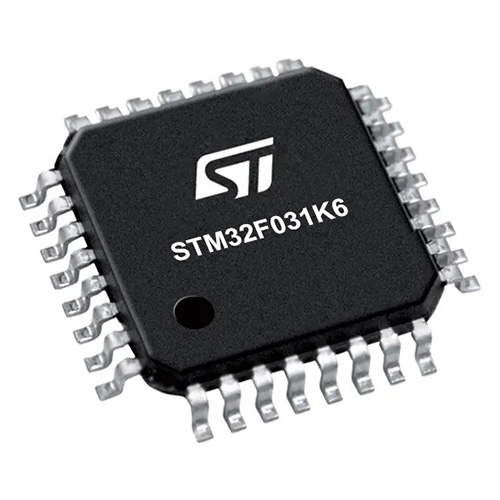
Architecture
ARM Cortex-M0
MCU Memory (KB)
32
Silicon Vendor
STMicroelectronics
Pin count
32
RAM (Bytes)
4096
You complete me!
Accessories
Click Shield for Nucleo-32 is the perfect way to expand your development board's functionalities with STM32 Nucleo-32 pinout. The Click Shield for Nucleo-32 provides two mikroBUS™ sockets to add any functionality from our ever-growing range of Click boards™. We are fully stocked with everything, from sensors and WiFi transceivers to motor control and audio amplifiers. The Click Shield for Nucleo-32 is compatible with the STM32 Nucleo-32 board, providing an affordable and flexible way for users to try out new ideas and quickly create prototypes with any STM32 microcontrollers, choosing from the various combinations of performance, power consumption, and features. The STM32 Nucleo-32 boards do not require any separate probe as they integrate the ST-LINK/V2-1 debugger/programmer and come with the STM32 comprehensive software HAL library and various packaged software examples. This development platform provides users with an effortless and common way to combine the STM32 Nucleo-32 footprint compatible board with their favorite Click boards™ in their upcoming projects.
Used MCU Pins
mikroBUS™ mapper
Take a closer look
Click board™ Schematic

Step by step
Project assembly
Software Support
Library Description
This library contains API for Air Quality 11 Click driver.
Key functions:
airquality11_get_aqi_uba- This function reads the calculated Air Quality Index according to the UBA.airquality11_get_tvoc- This function reads the calculated equivalent TVOC concentration in ppb.airquality11_get_aqi_s- This function reads the calculated relative Air Quality Index proprietary to ScioSense.
Open Source
Code example
The complete application code and a ready-to-use project are available through the NECTO Studio Package Manager for direct installation in the NECTO Studio. The application code can also be found on the MIKROE GitHub account.
/*!
* @file main.c
* @brief Air Quality 11 Click example
*
* # Description
* This example demonstrates the use of the Air Quality 11 Click board
* by reading and displaying the calculated Air Quality Index according to the UBA and ScioSense,
* and equivalent TVOC and CO2 concentration.
*
* The demo application is composed of two sections :
*
* ## Application Init
* The initialization of I2C and SPI module and log UART.
* After driver initialization, the app sets the default configuration.
*
* ## Application Task
* The demo application displays the Air Quality Index of the UBA information,
* concentration of the TVOC and CO2 and Air Quality Index according to ScioSense.
* Results are being sent to the UART Terminal, where you can track their changes.
*
* ## Additional Function
* - static void airquality11_display_aqi_uba ( void )
*
* @author Nenad Filipovic
*
*/
#include "board.h"
#include "log.h"
#include "airquality11.h"
static airquality11_t airquality11;
static log_t logger;
/**
* @brief Air Quality 11 display AQI-UBA function.
* @details This function parses the Air Quality Index per UBA (AQI-UBA) value
* and displays it on the USB UART.
* @param[in] aqi_uba : AQI-UBA value.
* @return None.
* @note None.
*/
void airquality11_display_aqi_uba ( uint8_t aqi_uba );
void application_init ( void )
{
log_cfg_t log_cfg; /**< Logger config object. */
airquality11_cfg_t airquality11_cfg; /**< Click config object. */
/**
* Logger initialization.
* Default baud rate: 115200
* Default log level: LOG_LEVEL_DEBUG
* @note If USB_UART_RX and USB_UART_TX
* are defined as HAL_PIN_NC, you will
* need to define them manually for log to work.
* See @b LOG_MAP_USB_UART macro definition for detailed explanation.
*/
LOG_MAP_USB_UART( log_cfg );
log_init( &logger, &log_cfg );
log_info( &logger, " Application Init " );
// Click initialization.
airquality11_cfg_setup( &airquality11_cfg );
AIRQUALITY11_MAP_MIKROBUS( airquality11_cfg, MIKROBUS_1 );
err_t init_flag = airquality11_init( &airquality11, &airquality11_cfg );
if ( ( I2C_MASTER_ERROR == init_flag ) || ( SPI_MASTER_ERROR == init_flag ) )
{
log_error( &logger, " Communication init." );
for ( ; ; );
}
if ( AIRQUALITY11_ERROR == airquality11_default_cfg ( &airquality11 ) )
{
log_error( &logger, " Default configuration." );
for ( ; ; );
}
log_info( &logger, " Application Task " );
log_printf( &logger, "---------------------------\r\n " );
Delay_ms ( 100 );
}
void application_task ( void )
{
uint8_t aqi_uba = 0;
uint16_t aq_data = 0;
if ( AIRQUALITY11_OK == airquality11_get_aqi_uba( &airquality11, &aqi_uba ) )
{
airquality11_display_aqi_uba( aqi_uba );
Delay_ms ( 100 );
}
if ( AIRQUALITY11_OK == airquality11_get_tvoc( &airquality11, &aq_data ) )
{
log_printf( &logger, " TVOC: %u [ppb]\r\n", aq_data );
Delay_ms ( 100 );
}
if ( AIRQUALITY11_OK == airquality11_get_co2( &airquality11, &aq_data ) )
{
log_printf( &logger, " ECO2: %u [ppm]\r\n", aq_data );
Delay_ms ( 100 );
}
if ( AIRQUALITY11_OK == airquality11_get_aqi_s( &airquality11, &aq_data ) )
{
log_printf( &logger, " AQIS: %u [idx]\r\n", aq_data );
Delay_ms ( 100 );
}
log_printf( &logger, "---------------------------\r\n " );
Delay_ms ( 1000 );
}
int main ( void )
{
/* Do not remove this line or clock might not be set correctly. */
#ifdef PREINIT_SUPPORTED
preinit();
#endif
application_init( );
for ( ; ; )
{
application_task( );
}
return 0;
}
void airquality11_display_aqi_uba ( uint8_t aqi_uba )
{
switch ( aqi_uba )
{
case AIRQUALITY11_AQI_UBA_EXELLENT:
{
log_printf( &logger, " AQI-UBA Rating: Exellent\r\n" );
log_printf( &logger, " Hygienic Rating: No objections\r\n" );
log_printf( &logger, " Recommendation: Target\r\n" );
log_printf( &logger, " Exposure Limit: No limit\r\n" );
break;
}
case AIRQUALITY11_AQI_UBA_GOOD:
{
log_printf( &logger, " AQI-UBA Rating: Good\r\n" );
log_printf( &logger, " Hygienic Rating: No relevant objections\r\n" );
log_printf( &logger, " Recommendation: Sufficient ventilation\r\n" );
log_printf( &logger, " Exposure Limit: No limit\r\n" );
break;
}
case AIRQUALITY11_AQI_UBA_MODERATE:
{
log_printf( &logger, " AQI-UBA Rating: Moderate\r\n" );
log_printf( &logger, " Hygienic Rating: Some objections\r\n" );
log_printf( &logger, " Recommendation: Increased ventilation - Search for sources\r\n" );
log_printf( &logger, " Exposure Limit: < 12 months\r\n" );
break;
}
case AIRQUALITY11_AQI_UBA_POOR:
{
log_printf( &logger, " AQI-UBA Rating: Poor\r\n" );
log_printf( &logger, " Hygienic Rating: Major objections\r\n" );
log_printf( &logger, " Recommendation: Intensified ventilation - Search for sources\r\n" );
log_printf( &logger, " Exposure Limit: < 1 month\r\n" );
break;
}
case AIRQUALITY11_AQI_UBA_UNHEALTHY:
{
log_printf( &logger, " AQI-UBA Rating: Unhealthy\r\n" );
log_printf( &logger, " Hygienic Rating: Situation not acceptable\r\n" );
log_printf( &logger, " Recommendation: Use only if unavoidable - Intensified ventilation recommended \r\n" );
log_printf( &logger, " Exposure Limit: hours\r\n" );
break;
}
default:
{
log_printf( &logger, " AQI-UBA Rating: Unknown\r\n" );
break;
}
}
log_printf( &logger, "- - - - - - - - - - - - - -\r\n " );
}
// ------------------------------------------------------------------------ END
Additional Support
Resources
Category:Environmental


